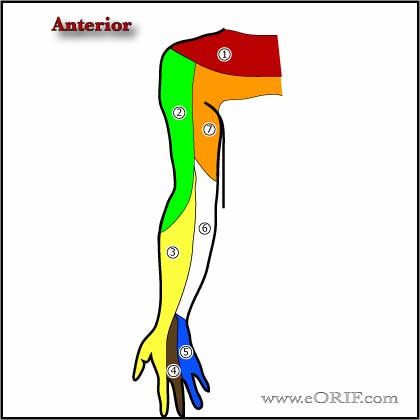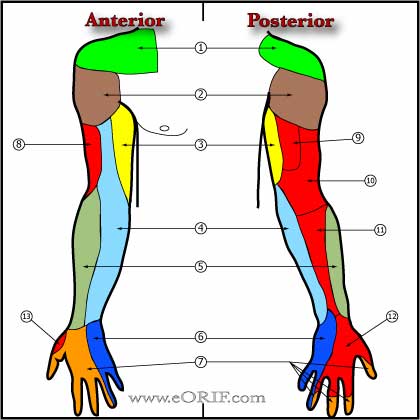|


|
synonyms
Musculocutaneous Nerve Palsy ICD-10
A- initial encounter
D- subsequent encounter
S- sequela
Musculocutaneous Nerve Palsy ICD-9
- 955.4 Injury to perpheral nerve of shoulder girdle - musculocutaneous nerve
Musculocutaneous Nerve Palsy
- 8.2% of pts undergoing open anterior reconstructions for GH instability will have a neurologic deficit. 78% of these will have complete resolution of the deficit. (JSES 1999;8:266)
- Neuroligic injury/brachial plexus palsy has been associated with scalene block anesthesia (Weber, JBJS 2002;84A:775)
- Signs of injured peripheral nerve recovery(radial nerve) can be delayed longer than 6 months. EMG/NCV findings parallel clinical findings and show signs of recovery no more than a month before clinically evident. Complete nerve recovery can take 2 years or more. (Ring, J Hand Surg 2004;29A:144)
- Musculocutaneous nerve palsies can be treated by intercostal to musculocutaneous nerve transfers. 90% achieve >/= M3 biceps strength, 70% achieve >M4 strength. Nerve transfers are best done within 9 months of injury. (Merrell, J Hand Surg 2001;26A;303)
|